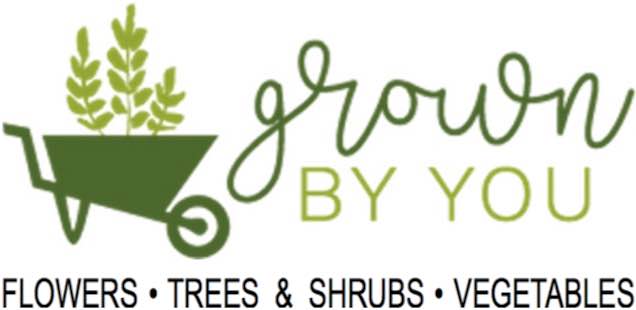> Next: Installing Tomato Cages
Stakes and Other Plant Supports
On this page find the most common ways to provide vegetable plants support, staking, or training vegetable plants onto frames and trellises so they grow healthily and require less space in your garden, including:
-
- Descriptions of the most common ways to support various vegetable plants.
- How to use vegetable plant supports to grow vertical gardens in less space.
- How to support plants with heavy fruit.
- The important roles pruning and training vegetable plants play in growing quality fruit and vegetables.
- What vegetables should I grow?
- A step-by-step demonstration of how to build a tepee support for pole peas, beans, and climbing vines.
- A step-by-step demonstration of how to build a structural support for vine vegetables that bear heavy fruit.
Plant Supports

Frames, stakes, poles, strings, wood supports, tepees, and trellises are key to healthy growth of vegetable plants. These supports keep fruit off of the ground, preventing rot and blight.
Supports allow vining plants to grow up instead of sprawling. Vertical gardens produce more vegetables than those without supported plants.
Besides efficiently using vertical space to grow more vegetables in a given area, supports hold vines above the moisture in the soil or mulch beneath them, keeping burrowing and crawling insects at bay while improving air circulation, preventing soil-borne fungal disease spores from reaching their foliage.
Visitors to your garden will be amazed to see large gourds, melons, pumpkins, and squash dangling in midair from support frames and trellises.
These heavy fruits usually grow on plants that develop thick, strong stems to support themselves. Still, simple supports aid melons, pumpkins, gourds, or winter squash vines. Wrap their fruit loosely in stretch nylon net and tie the net to supports, rather than allow the fruit’s weight to pull down the vines.
Vigorous branching plants also require both training to the supports and careful pruning to limit the number of fruit they are allowed to bear.
Such pruning reduces the amount of fruit produced by your plants, but the size of each of them will be larger. In the end they will yield nearly identical amounts of fruit by weight compared to plants you grow without supports or pruning.
Supporting Vining Plants

Some vining vegetable plants naturally have tendrils or so-called holdfasts to support their stem’s weight. Others need assistance, help to cling to their supports. Aid them using stretchy plastic plant tape, string, or plastic-coated wire ties.
Remember to carefully wind the vines and stalks around the supports as they grow. Bind their fleshy vines loosely to stakes or trellises. Allow them some flexibility of movement and avoid girdling them with tape or ties as they grow.
You may have to perform this task of training young vines onto the supports several times a week while they are growing rapidly.
Installing Vegetable Plant Supports

Install supports when you plant or after shoots emerge.
The best time to install plant supports such as stakes, poles and frames, and supporting systems such as string or wire trellises if at time of planting.
By installing supports at time of planting rather than later—when the need for them is evident—you’ll avoid disturbing the plants and their developing roots.
Slicing tomatoes, vining plants with heavy fruit, and pole varieties of both beans and peas are among the vegetables that require supports.
Smaller bush vegetables such as bush beans, bush peas, peppers, and cherry tomatoes require string supports or trellises to help them support their fruit.
For best results, plant them in rows and install a string trellis along each side, or make a tepee of wood stakes for them to climb.
Heavy-fruited vegetables like pumpkins, gourds and squash benefit from sturdy supports that prevent soil contact and fungal diseases. Simple pyramids made of garden stakes are ideal for increasing air circulation around the new growth and ripening fruit.
Step-By-Step Instructions
While erecting stakes and poles and attaching strings to them with stakes and ties are simple to construct and install, it requires a bit more thought to build a tepee for a climbing vine or low structural supports for heavy fruit-bearing vegetable plants such as melons and pumpkins.
The following step-by-step demonstrations provide detailed photos and descriptions for building a tepee and a log-cabin structural support.

Trellises, Poles, and Tepees
Gather wooden stakes, a mallet, a marker, garden twine or wire, a staple gun, and a knife or pair of scissors, then follow the steps shown for each option before or after planting:
How to Build a Simple Tepee Support
Use 3 poles, 8 ft. (2.4 m) long, to make a tepee for pole beans and peas. Lay 2 poles parallel to each other. Add a third pole between them, laid in the opposite direction to overlap the ends of the first poles by 16 in. (40 cm).

Using twine, loosely lash the poles together at the crossover, tying 3–4 loops around each pole and knotting the twine to make a pivoting junction.

Erect the tepee by holding the lashed junction, raising and folding the poles to make a tripod. Centered the feet of the poles on the planting area and push down to set them into the garden bed’s soil.

How to Build a Support for Heavy Fruit
Gather wooden landscape tree poles, a handsaw or circular power saw, a hammer, and 10-penny nails, then follow the steps shown to cut the poles and erect a log-cabin-style support for heavy fruiting vines such as squash, melon and pumpkin:

Installing Log-Cabin Plant Supports for Heavy Vegetables
Cut 4 each 2-ft., 3-ft., and 4-ft. (60 cm, 90 cm, and 120 cm) landscape tree poles, made of stock about 4 in. (10 cm) in diameter.

Lay two of the 4-ft. (120 cm) poles on the ground parallel to one another and spaced equally from the center of the plant. Overlap them with the other pair. Create a strong join by nailing through their junction.

Measure 6 in. (15 cm) from the ends of the bottom course’s poles and lap a pair of 3 ft. (90 cm) poles. Again, nail the joints. Repeat for the last course of 2 ft. (60 cm) poles.

As the plant grows, blossoms, and sets fruit, train the vines by winding them around the log-cabin plant-support structure so they grow on it and their fruit rests on the cross-members of the support.
Raising the fruit off the ground prevents the fruit from coming direct soil contact and conserves space in the garden.







